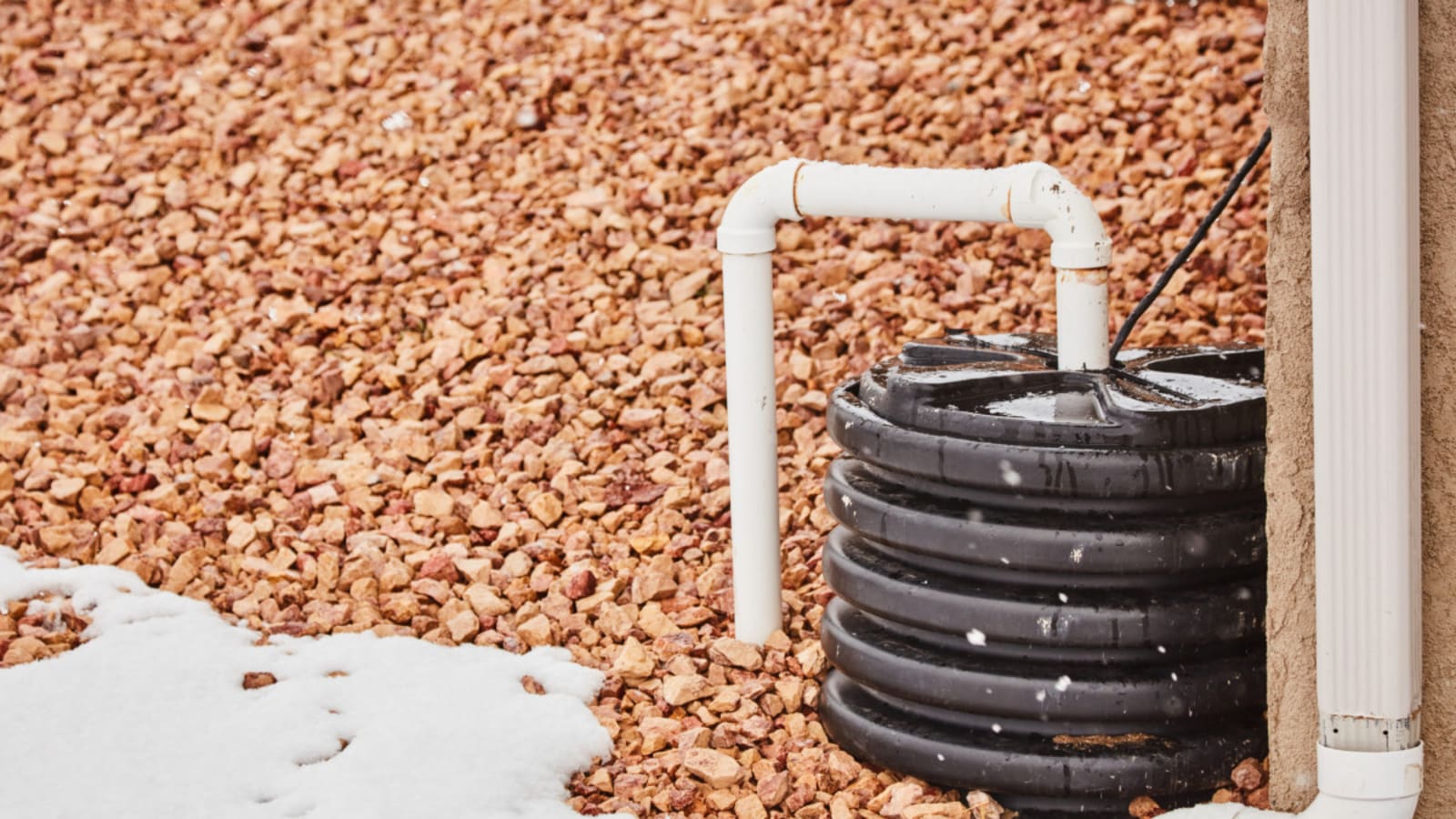
A true winter disaster is when it's freezing outside whilst flooding inside. Do not forget to winterize your outdoor sump pump. This simple preventive measure can protect your pump from freezing, cracking, and ultimately failing when you need it the most. If you live in zones where winter temperatures rarely dip below freezing, such as the southern U.S. or coastal areas, you can probably skip this process but it's a good reminder to give the sump basin and extension hoses a once over. However, if your region is prone to frost, it’s recommended to winterize your pump before the first hard freeze, typically around late October or early November.
Why should you winterize an outdoor sump pump?
Winterizing your sump pump helps prolong the life of your pump and can prevent a number of problems like pipe bursts or motor burnout. If water freezes inside the pump, it can cause serious damage to both the pump, its components, and the discharge pipe. An ice blockage can lead to costly repairs or replacements. A failed pump during winter might lead to flooding issues when snow starts melting with warmer temperatures.
You'll Need
- A bucket or sump pump basin with a drain plug
- Waterproof insulation or heating cable
- PVC pipe or hose insulation
- Screwdriver
- A sump pump cover (optional but recommended)
- Shop vac or sponge for removing excess water
- Non-toxic antifreeze (optional but helpful in extreme cold)
How to Winterize Your Outdoor Sump Pump
1. Turn Off the Power
- Unplug the sump pump from the outlet or flip the breaker to ensure it's off.
- This step is essential for your safety before working on the sump pump.
2. Remove the Pump (If Removable)
- If the sump pump is removable, take it out of the sump pit for a more thorough inspection and cleaning.
- If the pump is not removable, proceed to the next step.
3. Drain All Water from the Basin
- Use a shop vac or sponge to remove any standing water from the sump pump basin.
- This step prevents water from freezing in the basin and causing damage.
4. Clean the Pump and Pit
- Remove debris, leaves, and sludge from both the pump and the sump pit.
- Clogged debris can block the system and damage the pump, so cleaning ensures efficiency and reduces the risk of winter issues.
5. Insulate the Discharge Line
- Wrap the discharge pipe or hose with heat tape or insulation to prevent freezing.
- Secure the insulation tightly with tape to ensure it stays in place.
6. Install a Pump Cover
- Consider installing a weatherproof cover if your sump pump doesn’t have one.
- A cover protects the pump from snow, ice, and freezing temperatures, adding an extra layer of defense.
7. Add Antifreeze (Optional)
- In areas with extremely cold winters, pour a small amount of non-toxic, plumbing-safe antifreeze into the sump pit.
- This will help prevent any remaining water from freezing.
8. Recheck and Power On
- Recheck all connections to ensure everything is properly insulated and protected.
- Plug the pump back in and test it to ensure it’s functioning before winter arrives.
FAQ
How Often Should I Winterize My Sump Pump?
You should winterize your outdoor sump pump once a year before the colder months arrive. Typically, it's best to do this in late October or early November to be prepared for when the cold weather hits.
Can I Use My Sump Pump During Winter?
Yes, your sump pump will still function during winter, and that's what needs to happen. These preventative measures don’t hinder its operation, they protects the system so that it will work when temperatures warm and the water table rises. As long as it's prepared correctly, it should divert water away from any foundation walls and keep your basement dry.
What Happens If I Don’t Winterize My Sump Pump?
If you skip winterizing, you should have plumbing services on speed dial. If the pump freezes, it could crack, which renders it useless. Worse, if the discharge hose freezes, water flow could back up, leading to crawl space or basement flooding or further damage to your home.
More must-reads:
- NFL insider reveals new info on Cowboys-Micah Parsons struggle
- Tottenham Hotspur star announces unexpected departure
- The '250-strikeout MLB seasons' quiz
Breaking News
Trending News
Customize Your Newsletter
 +
+
Get the latest news and rumors, customized to your favorite sports and teams. Emailed daily. Always free!








